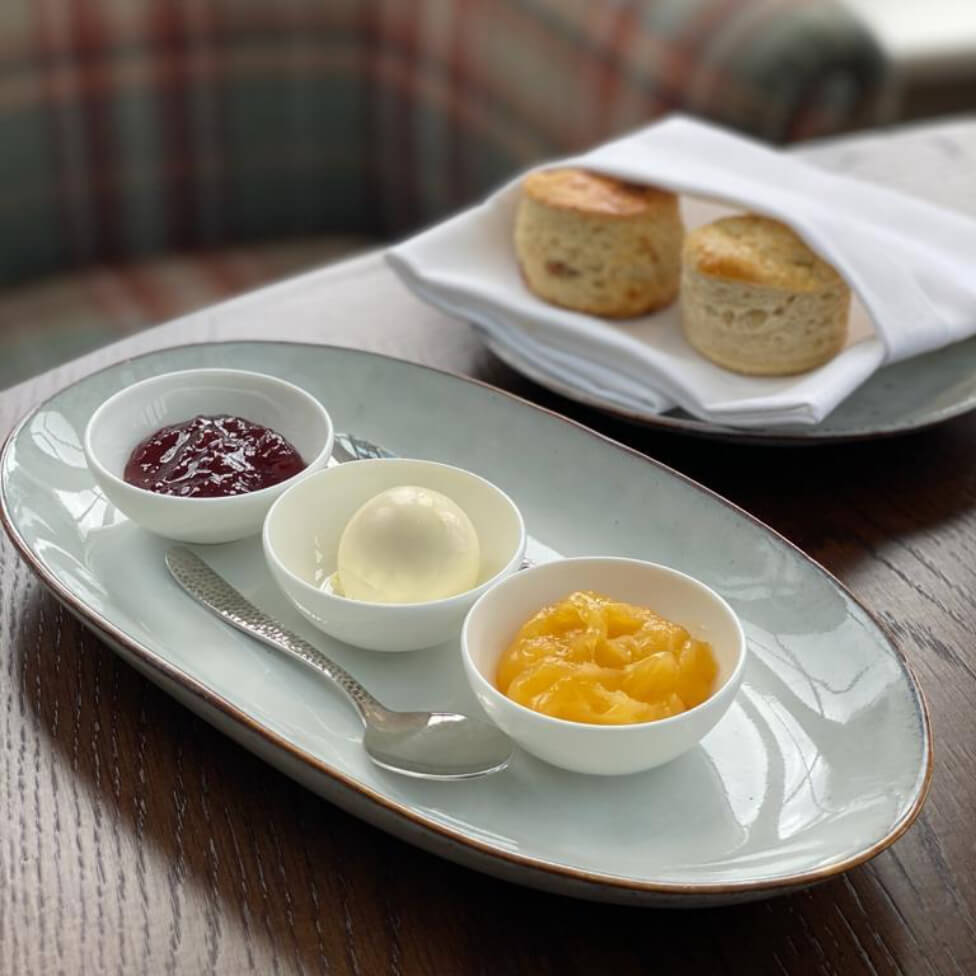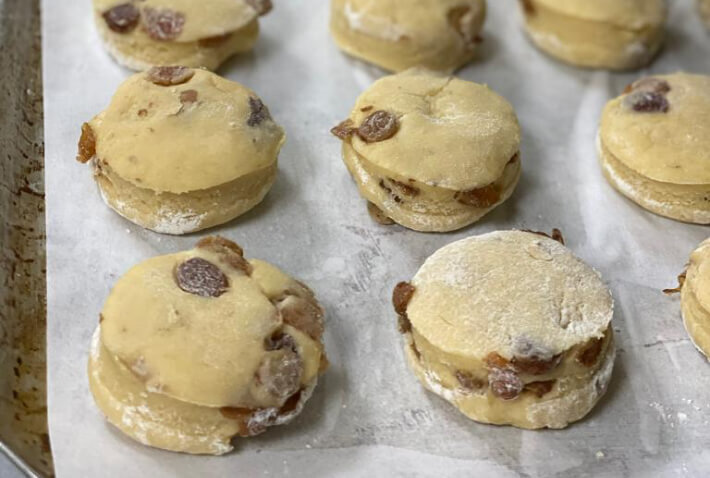
Simon Rogan’s Scone Recipe - straight from the Afternoon Tea offering at Linthwaite House
If you consult the numerous Wikipedia pages and articles related to the topic, there are a number of different theories on the origin of the famous scone. Some can be traced to the ancient Welsh tradition of cooking small round yeast cakes (leavened breads) on bakestones, and later on griddles. Another theory is that that scones are named for the Stone (scone) of Destiny, a stone upon which Scottish kings once sat when they were crowned. Other contenders include the Gaelic “sgonn” (pronounced as “gone”), a shapeless mass or large mouthful; the Dutch “schoonbrot,” fine white bread; and the closely-related German “sconbrot,” fine or beautiful bread.
Whatever the origin, we’re grateful for this creation and asked Simon Rogan Executive Chef of Henrock Restaurant at Linthwaite House for his scone recipe, which were delighted to supply below for you to try out:
Scones
Makes 6 scones
- Flour - 175gr
- Baking powder - 9.5gr
- Salt - 1.75gr
- Butter - 33gr
- Sugar - 30gr
- Fresh Whole eggs - 1
- ButterMilk - 55gr
- Mix Cold Diced Butter with the sugar flour salt and baking powder until the mix resembles fine crumbs (around 10 min in the mixer) and all the butter has been evenly distributed.
- Add the eggs and buttermilk in one time and mix quickly until the dough comes together. Do not over mix. If you want to add any fruit, do it at this point. Raisins or dried fruit will need to be soaked for a couple of hours and well drained, a total amount of 35g of soaked dried fruit or fresh fruit to the dough can be added.
- Shape the dough in to a ball and cover with clingfilm. Leave it to rest 20 minutes on the table top.
- Work the dough gently then roll out to 14mm. Rest in the fridge 1 hour.
- Cut the dough with a 4.5cm Cutter, dipped in flour, then flip the disc upside down on a baking tray with baking paper.
- Rest room temperature for 1 hour and in the meantime pre heat the oven at 200 degrees.
- Make sure that there is a tray upside down to warm up un the oven while pre eating and a metal container with boiling water at the bottom of the oven. There needs to be humidity while baking, for the scones not to dry out and they need to sit on a very hot surface so the bottom will cook and they will rise evenly.
- Bake in the oven for 8 minutes, turn the trays and bake 4 more minutes.
- Allow to cool down a little before servings

Scones on the Afternoon Tea at Linthwaite House
Now, the everlasting debate . . . when you serve your freshly baked scones – are you putting the jam or cream on first!
Be sure to tag us in your creations @linthwaitehouse and @henrocksimonrogan


